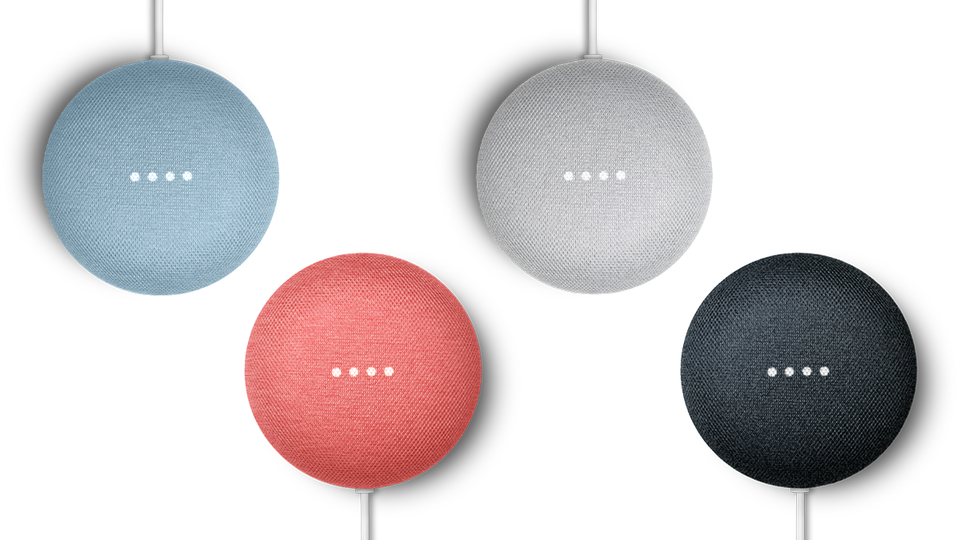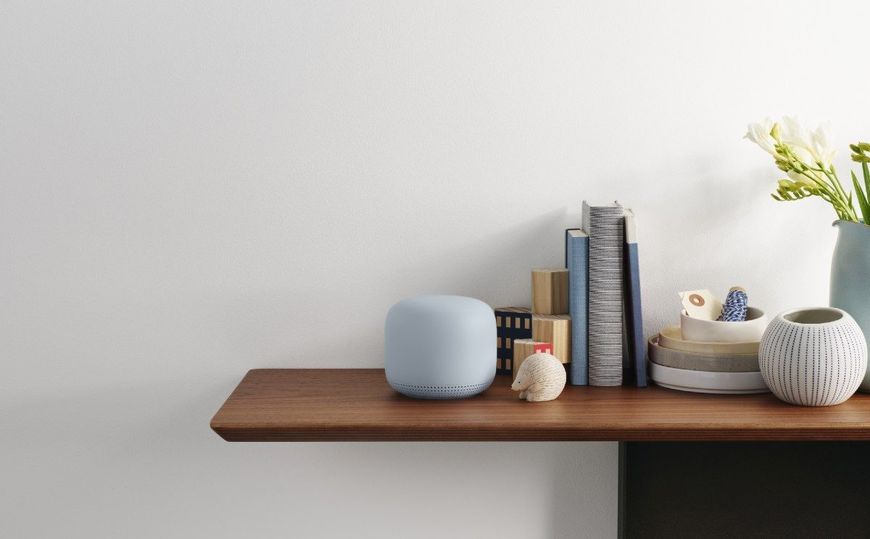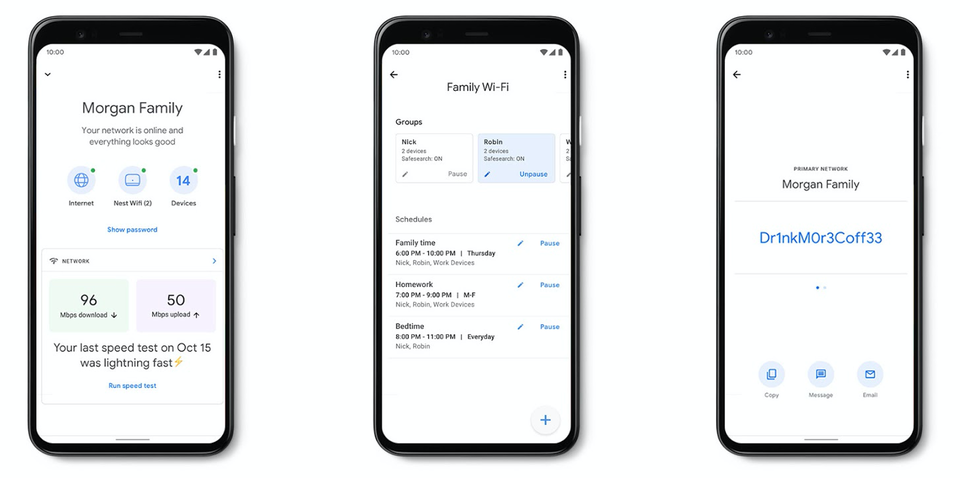Google unveils Pixel 4 and 4 XL, Pixelbook Go laptop, Nest WiFi
Google's overnight launch rolled out two new Pixel 4-series smartphones plus a clutch of smart home devices.
Google on Tuesday showed how it will attempt to get its high-end Pixel phones out of their rut: a combination of familiar Apple and Samsung technology. and cutting-edge camera and digital-assistant features that showcase the company’s lead in artificial intelligence.
The new models – the 5.7-inch Pixel 4 and 6.3-inch Pixel 4 XL – have redesigned cases with a new camera bump and an additional lens alongside a much-improved display with smoother animations and facial recognition to replace yesteryear’s fingerprint sensor. Google also increased the memory to 6GB, addressing a pervasive complaint about overly frugal specs on last year’s devices.
Missing from the mix is 5G cellular connectivity despite many 5G networks kicking in over the next 12 months. Google said it is working on 5G technology, but wouldn’t say when a 5G Pixel model would launch. Apple plans to launch a 5G iPhone around next September, while Samsung started shipping 5G phones earlier this year.
A new radar-based motion sensor lets people control the Pixel 4 with hand gestures in the air, and it will also detect users’ presence and attention to keep the screen on while reading. Google Assistant is more capable and deeply integrated than ever, extending a lead on Apple’s Siri voice assistant and Samsung’s Bixby.
The facial-recognition sensor on the Pixel 4 appeared fast in a demonstration, working in concert with the Motion Sense feature. Motion Sense alerts the phone that a user’s hand is approaching to pick up the device, which in turn triggers the facial sensor to turn on and start scanning, leading to a quicker unlock. Apple has had Face ID on iPhones since 2017, but Google‘s implementation is a different approach.
The Pixel’s face authentication will work with some payment apps and face data will be securely stored on the device, according to Google. The motion sensor also lets users navigate between songs, snooze alarms, and decline calls with a hand gesture.
Google highlighted its new zoom lens on the back of the Pixel as the most significant 2019 addition to a device that gets its name from the emphasis on photography. Apple added a second lens in 2016 with the iPhone 7 Plus, but Google has long maintained that it can make up the hardware gap with software.
That story doesn’t change this year: Google argues that its imaging software is the best and the new lens only helps it extend that capability across a wider range of zoom. The company has developed a whole new image-processing pipeline for its zoom feature, borrowing from its advancements in nighttime photography with Night Sight.
The new Pixel cameras will show a live preview of what the image will look like before it is captured – a subtle but important improvement in an era of sophisticated image processing. Google has also added a dedicated slider for controlling shadow exposure for more advanced photographers, and a so-called astrophotography mode will let even amateurs capture detailed images of stars at night with a tripod and four minutes of exposure.
The Pixel’s updated voice assistant has a new swipe gesture for launching, on-device processing for tasks that don’t require the internet, and the ability to open specific pages or menus within apps upon a user’s command.
Google has added a new voice-memo app with on-the-fly transcription, which worked well in a demonstration. The new phones also include car crash detection and can automatically call emergency services.
The smaller Pixel 4 has a 5.7-inch screen, slightly bigger than last year’s model, though the overall size hasn’t increased. That matches the dimensions of the iPhone 11 Pro. The Pixel 4 XL, at 6.3 inches, sits in between the iPhone 11 and iPhone 11 Pro Max screen sizes.
The new Pixel 4 phones will cost A$1,049 or A$1,279 depending on screen size, with a standard 64GB of storage (you'll pay more for the 128GB model) and 6GB of RA,M in a choice of orange, black or white.
Google also showed off new Pixel Buds cordless headphones that are built to rival AirPods, with 5 hours of battery life and extended Bluetooth range. These are due for release in early 2020, although there is no Australian pricing or release date as yet.
The company's Nest line of smart-home devices is also growing. The Nest Home Mini is a second-generation version of the Google Home Mini that adds an improved speaker for better music playback, resulting in much-improved audio clarity, bass and fullness compared with the previous generation.
An on-board processing chip allows Google to load frequently used commands from the cloud directly to the device, meaning some tasks related to music playback and smart home automation will take less time.
The device is also now made from recycled fabric and plastic and comes in a new light blue color. Available now, the Nest Home Mini costs A$79 and includes a wall mount.
There is also a redesigned version of the Google WiFi home router system, now called Nest WiFi.
The new wireless routers continue with the previous design, with a mesh system that includes a base router and access points that can spread the connection across the home to avoid dead spots.
The main new feature is that the routers now double as Assistant devices, allowing them to respond to users’ questions and play music.
Due for Australian release on November 5, the Nest WiFi routers will be sold as a two-pack of one router and one extender for $269, with three-pack (one router and two extenders) for $349.
Rounding out the range is the Pixelbook Go laptop (Australian price and availability TBA). Google is going back to basics for its latest laptop, adopting the familiar standard clam-shell design as it moves away from the previous foldable, tablet-style Pixelbook. Google abandoned work on tablets earlier this year.
The Pixelbook Go has a 13-inch touchscreen but notably lacks a fingerprint sensor, a feature found on many other laptops.
The Google laptop has curved corners, a unique shell that makes it easier to carry, and a standard keyboard. The laptop starts at US$649 and comes in multiple configurations with 64GB to 256GB of storage, different Intel processors and either 8GB or 16GB of RAM.
The laptop runs Chrome OS, Google’s web-focused operating system and has controls to easily tap into Google services like its digital voice assistant. The benefit of Chrome OS over Windows and MacOS is that it has speedier boot-up times, doesn’t require as much on-board storage, and more quickly installs software and security updates.




Hi Guest, join in the discussion on Google unveils Pixel 4 and 4 XL, Pixelbook Go laptop, Nest WiFi